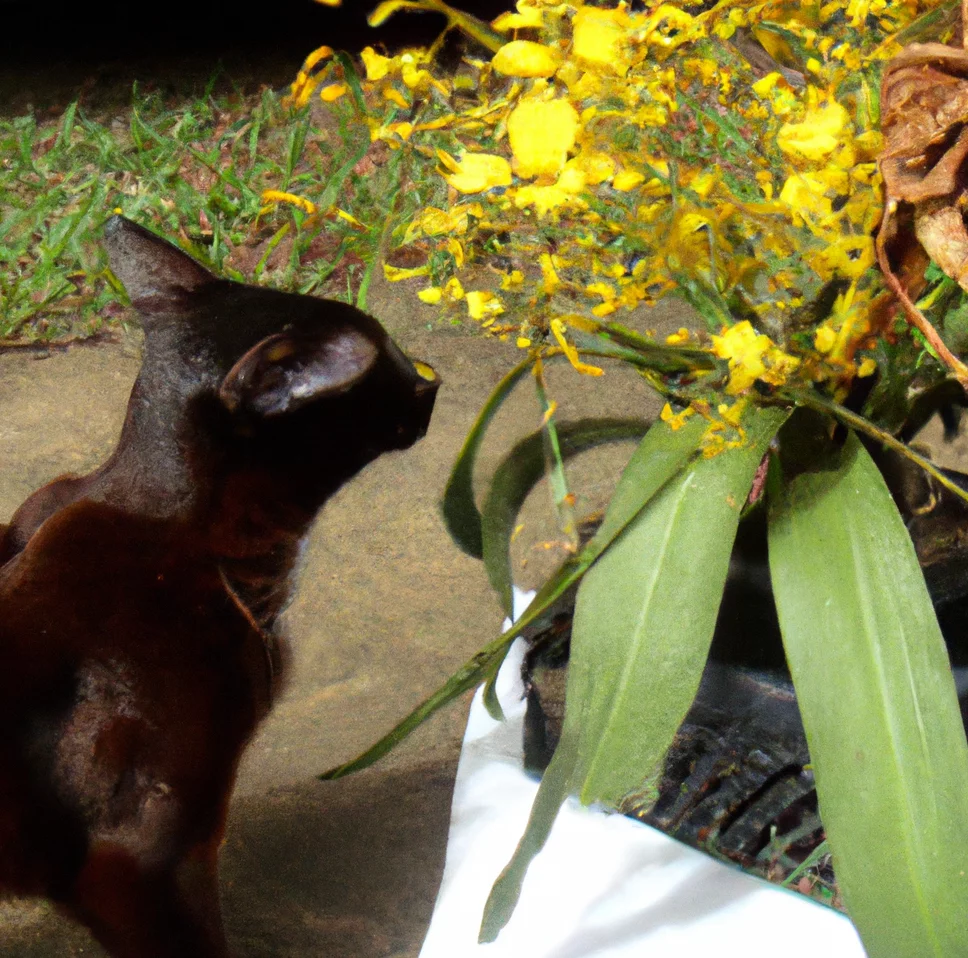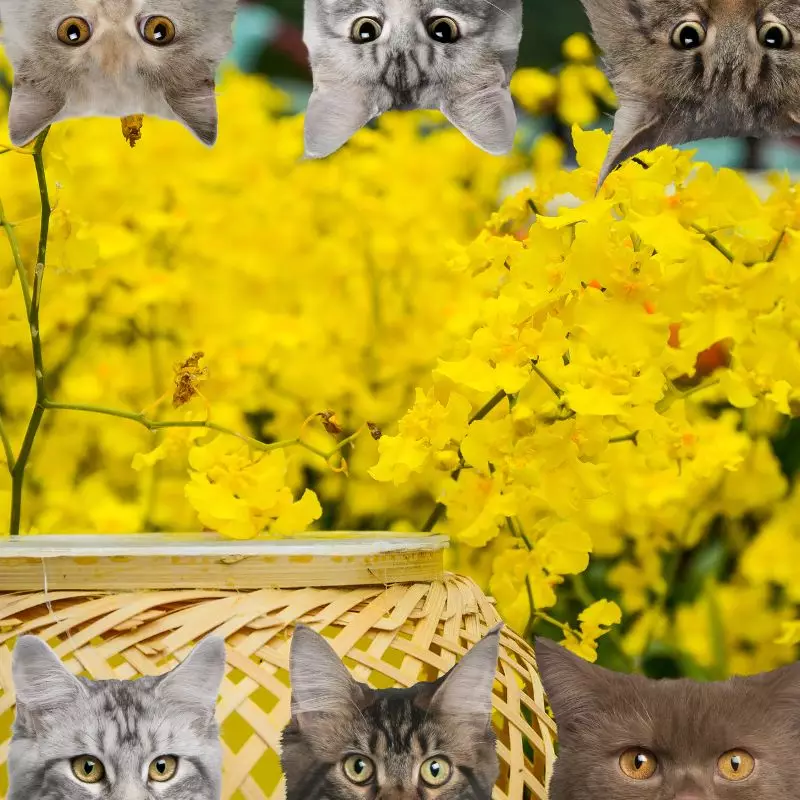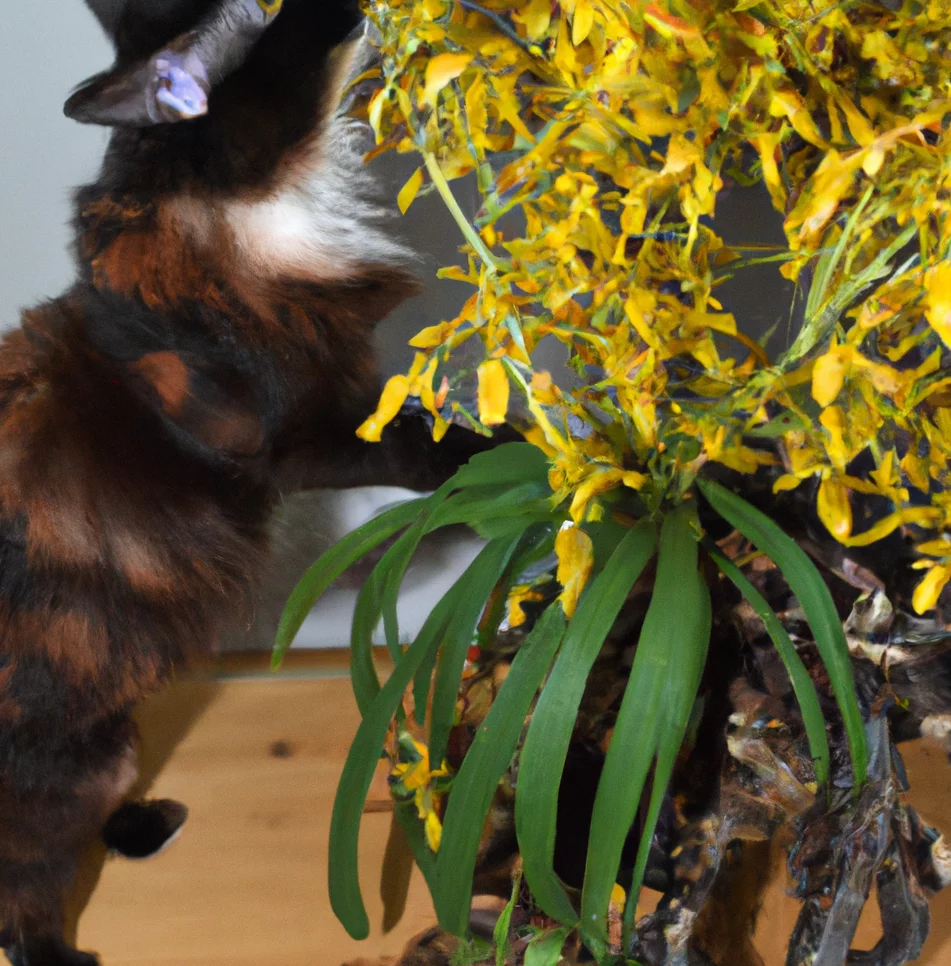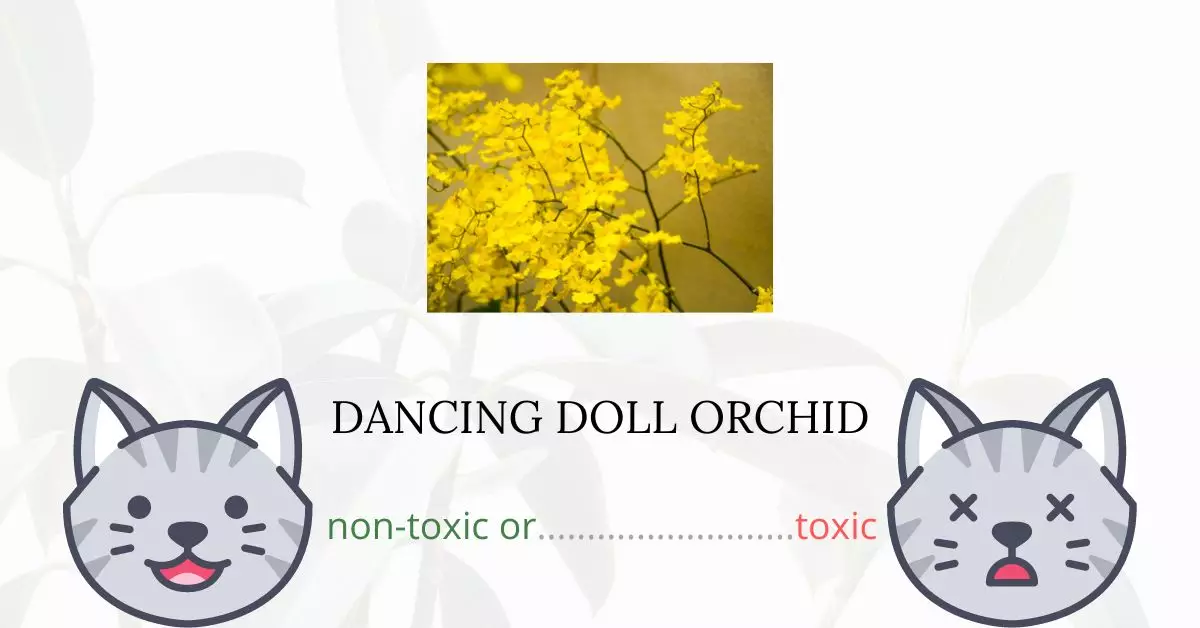Dancing Doll Orchids are not toxic for cats. In fact, most orchid species are generally safe for feline companions. It is essential to note, however, that while these orchids are non-toxic, it’s not advisable to allow your cat to consume any part of the plant habitually.
This article has been meticulously crafted in collaboration with a team of experienced DVMs (doctors of veterinary medicine). Their invaluable input ensures that we provide accurate and up-to-date information regarding the potential risks of various plants, particularly Dancing Doll Orchids, on cats. Furthermore, our findings are bolstered by extensive research from high-authority websites such as ASPCA and PetMD. According to the ASPCA, Dancing Doll Orchids are also non-toxic for dogs and horses.
Can Cats Eat Dancing Doll Orchid?

Dancing doll orchids are harmless for cats to eat in little amounts. Orchids, which belong to the Orchidaceae family, can be safely cultivated in a home with cats. None of many different varieties of orchids have been reported to cause toxicity to cats if they come into touch with or eat them.
Though the ASPCA states that orchids are not dangerous to cats, eating too many orchids may cause your feline companion to have an upset stomach.
You should also be mindful of using fertilizers, pesticides, and other chemicals on your plants. These products may cause poisoning in your cats which can even lead to fatality. Make sure to double-check the products you are using before putting them on your plants.
What is a Dancing Doll Orchid?

The Dancing Doll Orchid (Oncidium flexuosum) is a big cool-growing orchid native to Argentina and Brazil. With numerous 3 ft branching, arching spikes in blossom, each spike capable of bearing 100 or more 1-inch flowers, it soon grows into a specimen-sized plant and is a treat to the eyes.
It produces buttercup yellow flowers with a small number of chestnut streaks in the center. The flower has the appearance of a dancing doll orchid. In most cases, each bulb produces many inflorescences at the same time.
This plant requires high humidity because it prefers to have its roots in the air; only the roots required to hold it on its support come into touch with the mount. After spending the majority of the summer producing its tall and floriferous spikes, flowering occurs in the autumn to early winter. Flowers that last a long time are good for cutting.
Keeping Cats Away From Dancing Doll Orchid

Although cats are not harmful to orchids, their natural inclination to gnaw on leaves and blooms can inflict considerable damage to your orchid collection. The secret to success is thoughtful prevention: cats and houseplants can coexist.
The simplest approach to achieving harmony is to provide your cat with safe plants to gnaw on, a comfortable bed, and essentials such as scratchers, a cat tree, and plenty of toys. Your cat will be less tempted to eat your orchids, your plants will thrive, and you will be able to enjoy your pet’s company – as well as your favorite houseplants.
Plants to Avoid For Your Cats
If you are a cat owner and unsure if the plants growing in your yard are harmful to your cats, check out this list of toxic plants for cats. You can also check our list of non-toxic plants for cats.





